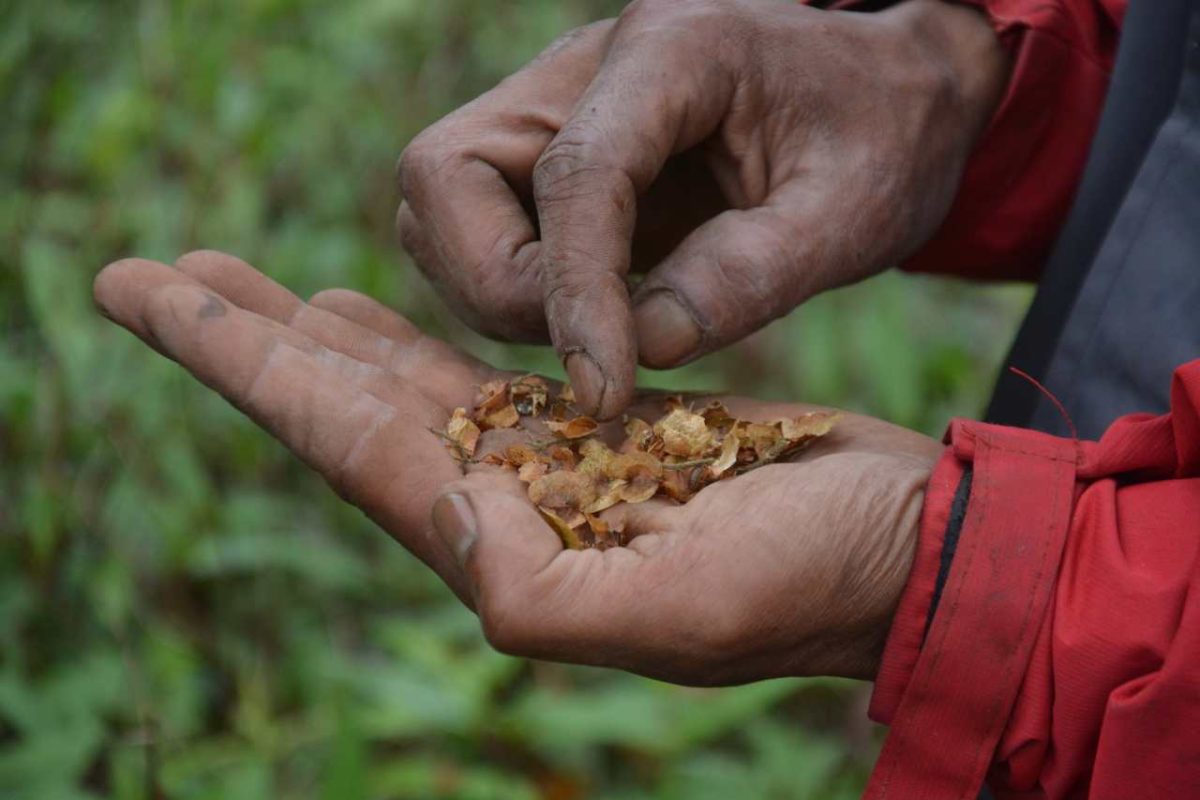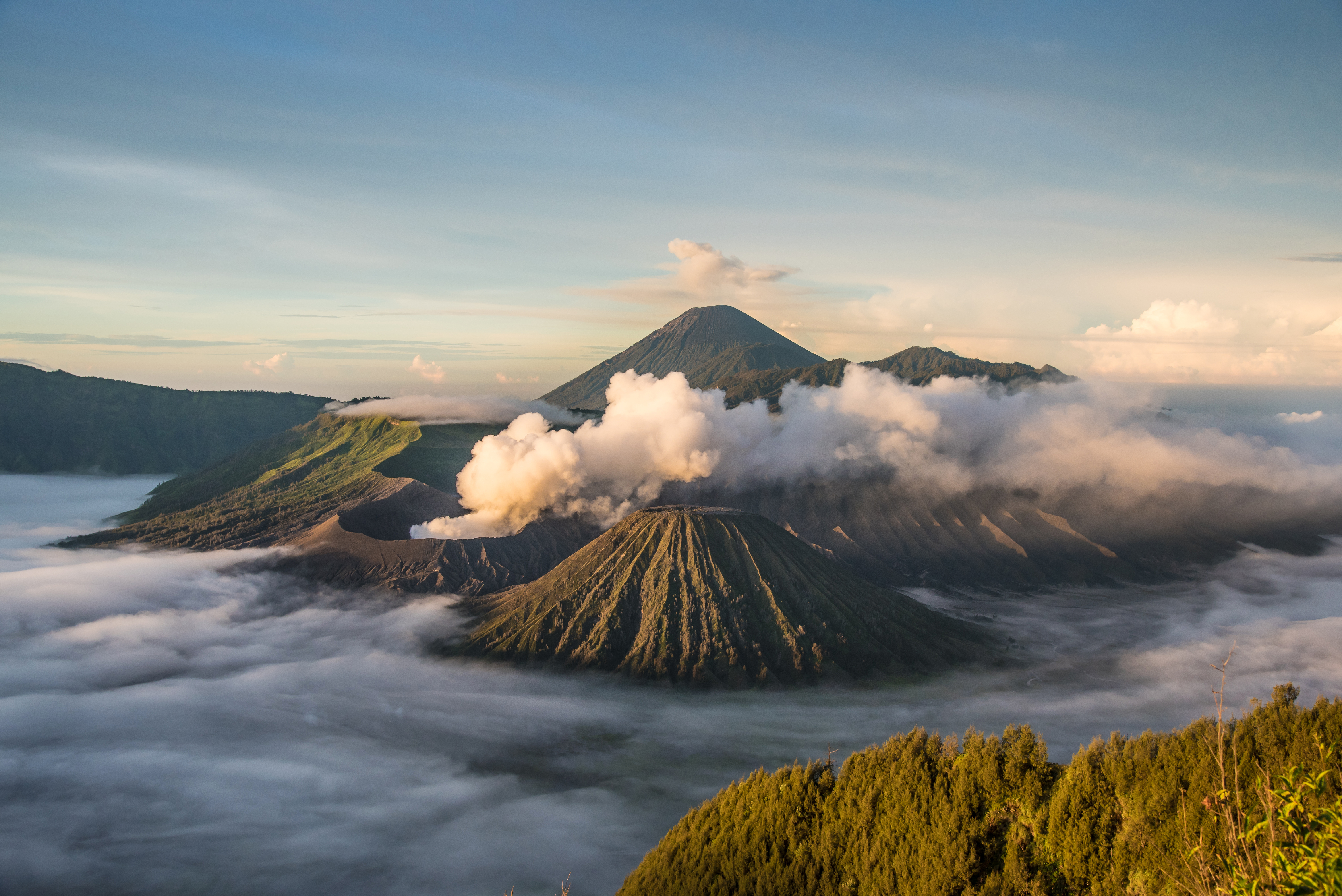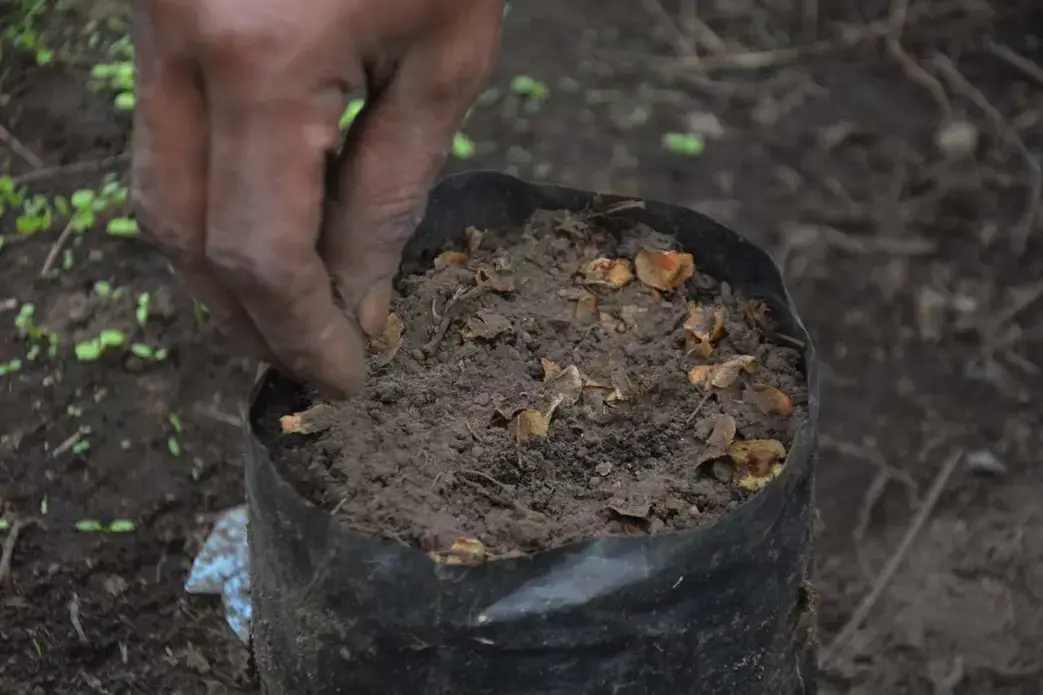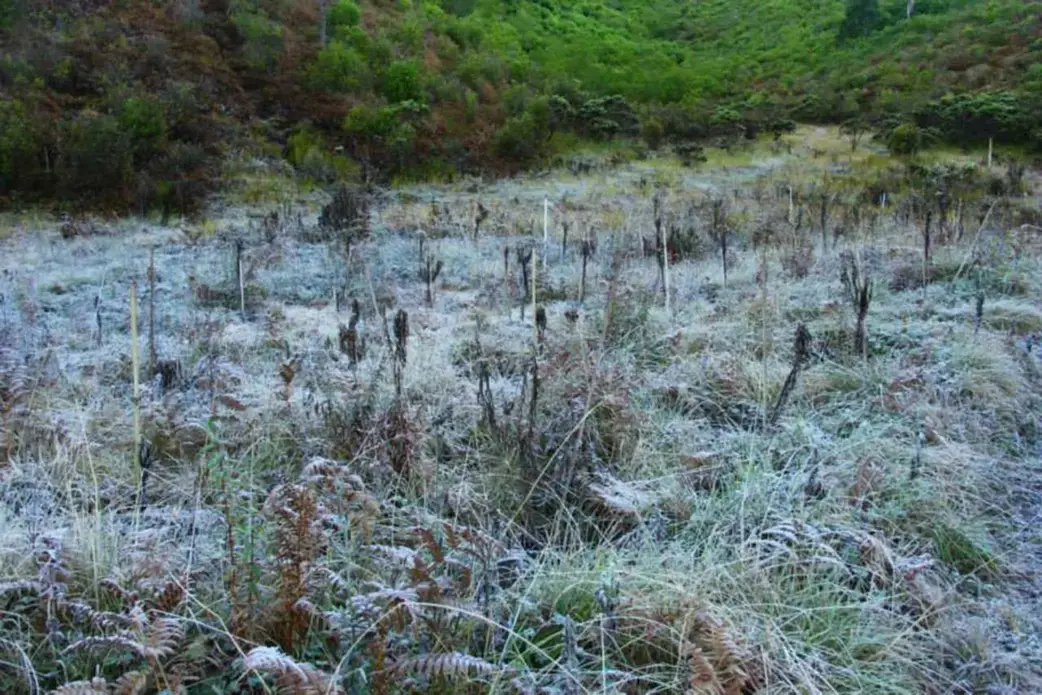
The story excerpt and photo captions below were translated from bahasa Indonesia. To read the original story in full, visit Ekuatorial. You may also view the original story on the Rainforest Journalism Fund website here. Our website is available in English, Spanish, bahasa Indonesia, French, and Portuguese.
The Bromo Tengger Semeru National Park (TNBTS) area experiences extreme temperature shifts with temps that can drop to minus 13 degrees Celsius, posing a unique challenge for ecosystem restoration. Meanwhile, much of Indonesia still lacks information about the type of trees that are suitable for such extreme temperatures, about how to deal with extreme temperatures, and about germination techniques.
By practicing local knowledge, reading historical records of naturalists, and involving the community as implementers, the TNBTS ecosystem restoration program has improved the tree growth rate by 83%. Not only that, but local people benefit from the transfer of natural knowledge, which informs their independent tree planting habits in their own communities.











